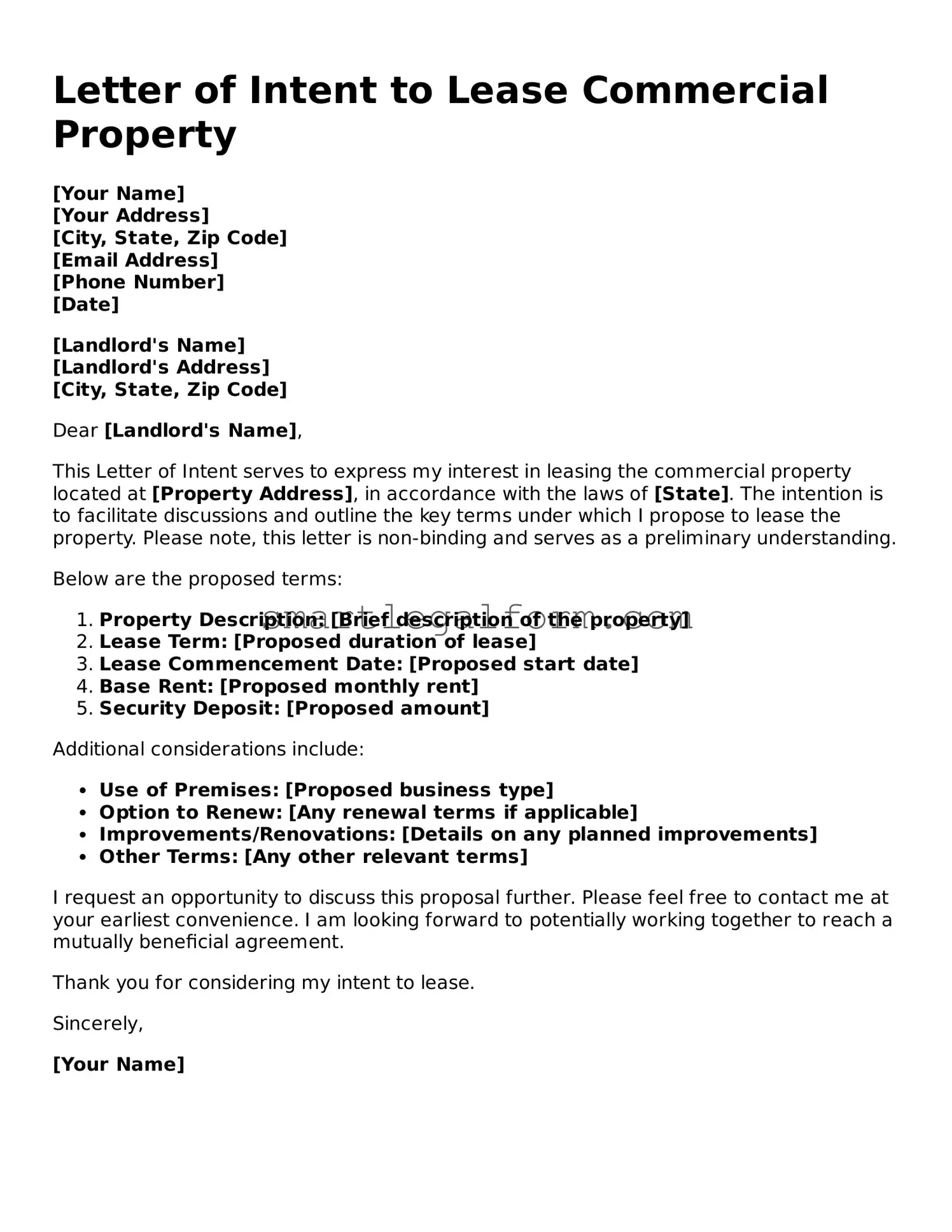Attorney-Approved Letter of Intent to Lease Commercial Property Form
A Letter of Intent to Lease Commercial Property is a preliminary document outlining the terms and conditions under which a potential tenant expresses interest in leasing a commercial space. This form serves as a starting point for negotiations between the landlord and tenant, detailing key aspects such as rental rates, lease duration, and any special requirements. Understanding this form is crucial for both parties to ensure a smooth leasing process.
Ready to take the next step? Fill out the form by clicking the button below.
Fill Out Your Form Online
